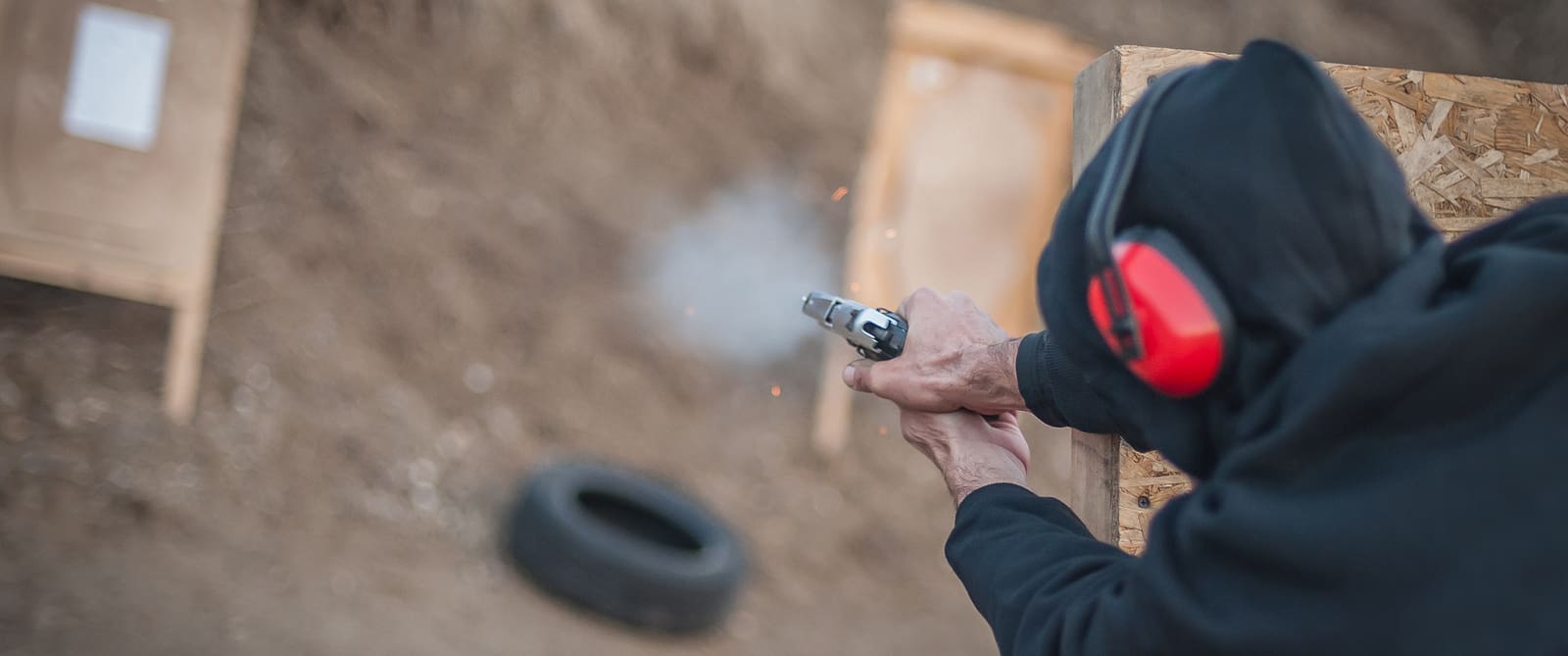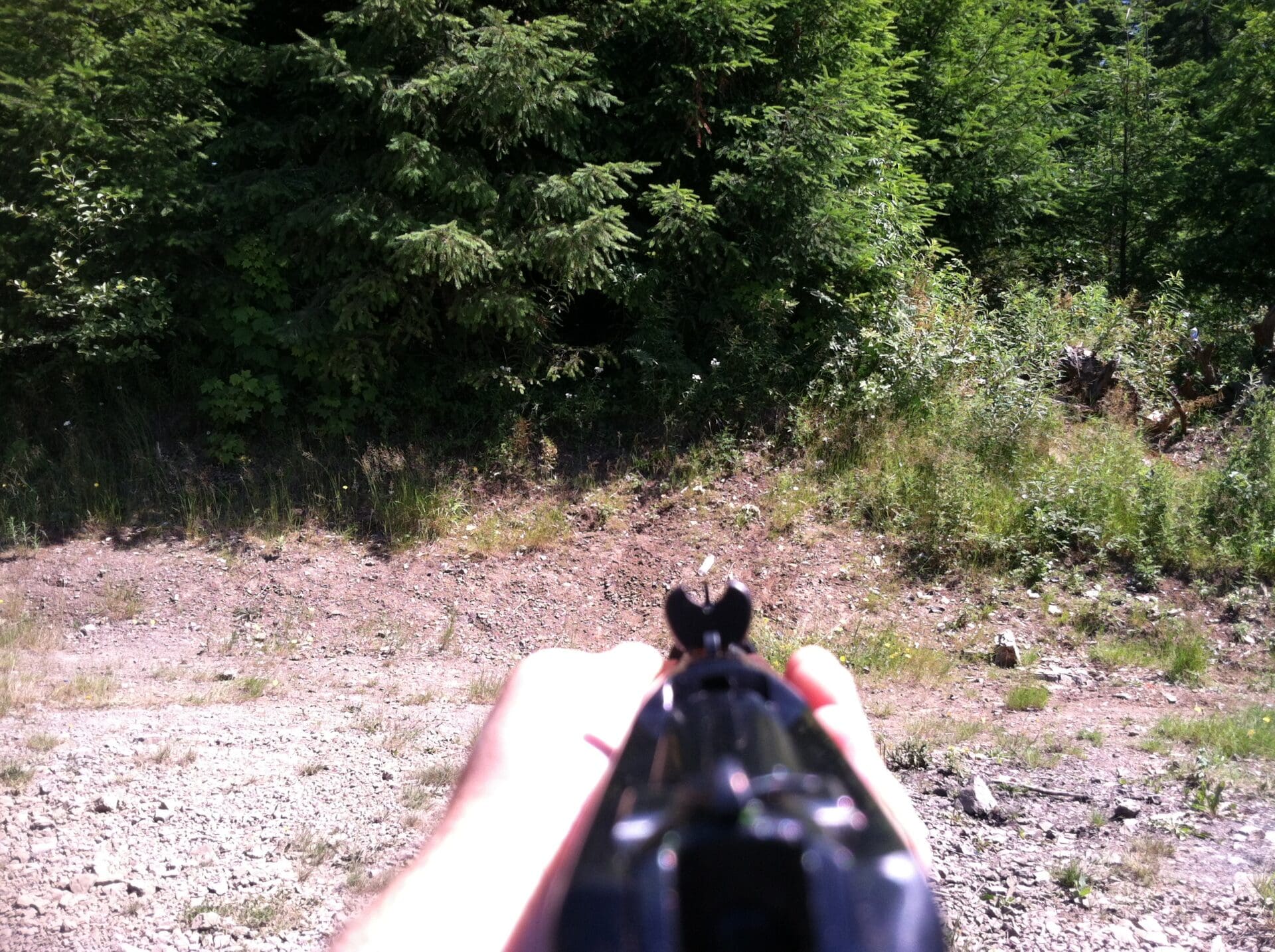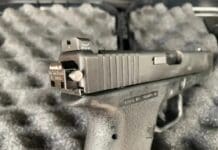Movement is a topic that’s mostly misunderstood and rarely practiced. As a foundational skill, it should be part of every competent gunman’s skill set. Why is movement so important? Because a moving target is harder to hit than a static one.
Movement is life
If all you practice is static shooting — drawing and shooting your firearm while standing still — there’s a good chance that’s exactly what you’ll do in a gunfight. Admittedly, that may be all you need to stop an imminent, credible threat of grievous bodily harm or death. And there’s no denying that it’s easier to hit a target from a stable platform. Which, comparatively, a moving body is not.
But again, it’s easier to hit a fixed target than one that’s moving. In a defensive gun use, X marks the spot. You are the target.
Whether the bad guy or guys are trying to punch, kick, strangle, knife or shoot you, the more difficult it is for them to orient themselves to your position (the second “O” in the OODA loop), the harder it is for them to injure or kill you (the “Decide and Act” part of the OODA loop).
Movement creates distance. Distance creates time. Time creates opportunities. Opportunities to escape. To find cover or concealment. To get to your weapon. To find an improvised weapon. To counterattack.

Imagine a bad guy coming at you with a knife from ten feet. What do you want to do first: draw your gun or move out-of-the-way? Hint: even if you manage to get to your gun and shoot, your attacker will be right on top of you.
The basics
There are three categories here; movement, motion, and running.
Movement might be a simple step right or left, front or back, immediately before or as you shoot. Or leaning one way or the other to shoot from behind cover or concealment. Motion might be walking or crouching immediately before or as you shoot (or seek cover, etc.).
With practice, you can reasonably expect to land effective rounds on target in the first two categories.
Running, on the other hand, is one of those situations where you need to make a choice. What’s the tactical imperative? Is it more important to run or to shoot? Because you won’t be able to do both. At least not effectively.
If running is the answer, orient yourself to cover, concealment or evasion, then high port and haul ass. If shooting is the answer, then yes, stop, plant and get good hits.
Of course you can run to cover or concealment, then stop, plant and get good hits. But know this: shooting on the run is a mobile form of spray and pray.
Don’t linger on your front sight
The secret to shooting while moving: your first sight picture is your best sight picture.
Simply put, you have a finite amount of time to get hits on target. The longer it takes to get those hits, the higher your risk of getting shot. So you need to be OK with the limited accuracy a less-than-ideal sight picture creates. (As you should; landing your shots across the available target zone creates more trauma and might suppresses the threat sooner.)

Once your sight picture is acceptable for the shot required, don’t dilly-dally trying to line-up your sights. It’s not going to happen, and it will cost you time [see: above]. The longer you wait for a perfect” sight picture, the more panicked you’ll become, the more likely you are to slap the crap out of the trigger. Which will really degrade your accuracy.
If you’re moving and shooting, accept that the sight picture isn’t going to be perfect. Aim for a sight picture that’s good enough for government work, then focus on performing your best possible trigger press.
Don’t make it any harder than it has to be
A lot of firearms trainers spend a lot of time teaching students how to create a stable platform while moving, usually by changing the way they walk or run. Not me. I figure if a shooter is adjusting their movement to improve their stability, they aren’t really moving.
Movement means your sights will be moving, too. Duh! So don’t worry how you’re moving; whether you use a duck walk, a Groucho march or some other ninja technique. Instead, separate your lower body from your upper body.
Let your lower body do what it knows how to do. It knows how to move, so let it move. Focus your mental resources on getting a good (but not necessarily great) sight picture and getting a great (not just a good) trigger press.
Movement is life. As in all things, try not to make your life more complicated than it needs to be. And practice.
Jeff Gonzales is a former US. Navy SEAL and preeminent weapons and tactics instructor. He brings his Naval Special Warfare mindset, operational success and lessons learned to the world at large. He is the president of Trident Concepts in Austin, Texas.




Great advice, Jeff (and greetings from Washington!). Shooting on the move really isn’t all that different from alpine skiing, tennis, or mountain biking. As you say, allow the lower body to absorb terrain, swallow bumps and dips, and maintain motion. Decouple the upper body to make a semi stable platform and let the gun float. As long as the sights are on target, “stance” is irrelevant.
It’s great advice, but finding a place you can do it is a PITA- it’s at least an hour’s drive to reach public land where you can plink around here. Probably more, the state gov here has been shutting down the popular spots because of *hitbirds who don’t clean up after themselves.
I saw video of a kid running down the street with a pistol in each hand, firing both simultaneously. Scoring hits on a moving target.
how did you enjoy your time in Chicago?
😄
Heh. It was a toddling town, when l was there.
What that kid (15 yo) was doing is damn near impossible – hence the retarded comment.
Ever tried to sprint w/ both arms fully extended, at eye level? Sheesh.
But Filth-adelphia, I think.
Your comment was slowed?
That’s just retarded.
After the TTAG post the other day on the homeowner shooting thru his door i tried to post but it never appeared.
I wrote that i bet the homeowner stood on the X inside his home. He shoulda moved to a better concealment location to get a better site of his attackers. For multiple obvious reasons.
Dynamic training is the best and not nearly has hard as one might think.
*better sight
Certainly something to think about. It’s just not an option for most people.
How about just coming out and saying it…spending time at the indoor range is good but you need to get paid training if you don’t have access to a large enough piece of land where you can freely shoot. Many indoor ranges will offer shooting from the holster and other things if you pay for a course through them. Then there is Gunsite Academy or even Valor Ridge.
My movement sux. Severe osteoarthritis in my knee,various & sundry ailments elsewhere. I do my best irregardless🙄
“Personal Defense Tip: Train to Move When You Shoot and to Shoot When You Move”
from personal experience…yeah, you need to be able to do this.
Also a fun way to learn if your grip is consistent depending on the pistol.
Yet Another Reason Why We Need to Rethink Red Flag Laws.
For you folks behind enemy lines in Washington State…King County’s New Gun Violence Office: The Sham That Exposes the Sham.
What caught my attention was the idea of Everytown writing laws for elected officials. The left has been screaming about the NRA doing this for a very long time but like everything else, it’s the left that actually engages in it.
Be sure and check out Action Shooting International http://www.asi-usa.org ASI was created 6 years ago by competitive shooters involved in the USPSA and IDPA. The founders set out to create a move and shoot sport, multiple targets, fun scenerios, use of cover designed for NON-COMPETITIVE shooters with a emphasis on New and inexperienced firearm owners, bringing more women into the shooting sports, supporting older participants and shooters with disabilities. ASI now has over 1,200 members, is available in several states as a “licensed” program for ranges and clubs. ASI’s primary objectives are 1) Safety 2) learn and improve firearm skills 3) Have Fun! The program is currently very popular in the State of Washington (the founding location) and is expanding to other States. Membership in ASI is required after 90 days – matches can be participated in during the 90 day period. ASI members are allowed to shoot any ASI match at any club/range offering the program. Range/club membership is not required to particpate in an ASI match. In the State of Washington, there a multiple ASI matches occuring throughout every month at ranges around the State. ASI is a very simplified (and safe) program that requires minimal cost and time You shoot whaterver you have (as deemed safe by the range .22-.45). Matches are designed for approximately, 50 rounds, matches last 2.5 – 3 hours. Setup takes approximately 20 minutes (indoor or outdoor ranges), no holster is required. All stages of fire start from low ready or a – gun on a table, ASI provides simple but challenging shooting scenerios from the ASI online stage library. Scoring is just for fun for you to see how you are progressing. Everyone is scored together regardless of firearm type, caliber, sights, mag capacity. ASI is essentially “bowling, but with guns”. The sport as been created for fun, is low key, very kind rules and Range Officers are friendly, helpful, well-trained and qualifed. Check to see if there is an ASI program in your area. If so, come on out! If not, email [email protected] and we will check into getting a program licensed at one of your local ranges.
Been doing the shoot and scoot routine since I was a kid. Shooting squirrels as a kid in the pasture. Let the dog run around and sniff the trees etc. Squirrels watch the dog running around while you look for the tree rats and move quietly around.
Learned more about this type of shooting in several deployments back in the Army. Not so much fun when the rats shoot back. Basically just don’t be a static target yourself and use cover and movement to get a clean shot at a possible aggressor.
I practice the drunken kung fu style of shooting.
I’ve got the drunken part down.
And I always carry two gunms.
Compete at practical pistol shooting for a year or two and you’ll get this down in no time.
Training to move and shoot can be difficult in restrictive states. one can’t go to an open area and practice, as most of those states are “sensitive areas” and any place one can shoot (i.e. shooting ranges) will not allow holster work or movement. Competitive shooting is also very limited in those states. Dry fire can be the only option and that has it’s limitations.
As others have said it’s almost impossible to find indoor range that will let you even draw from the holster.
I don’t know of any range that will allow you to move and shoot.
I guess if you take a course they close the range and let you walk down range and practice shooting then, but how are you keep up your newly acquired skill?
Just practice taking one step to the left or right. And then shoot. This is a good way to begin this important self-defense action.
This is the limiting for most indoor gun ranges. It’s what I learned in a class I took many years ago.
Comments are closed.